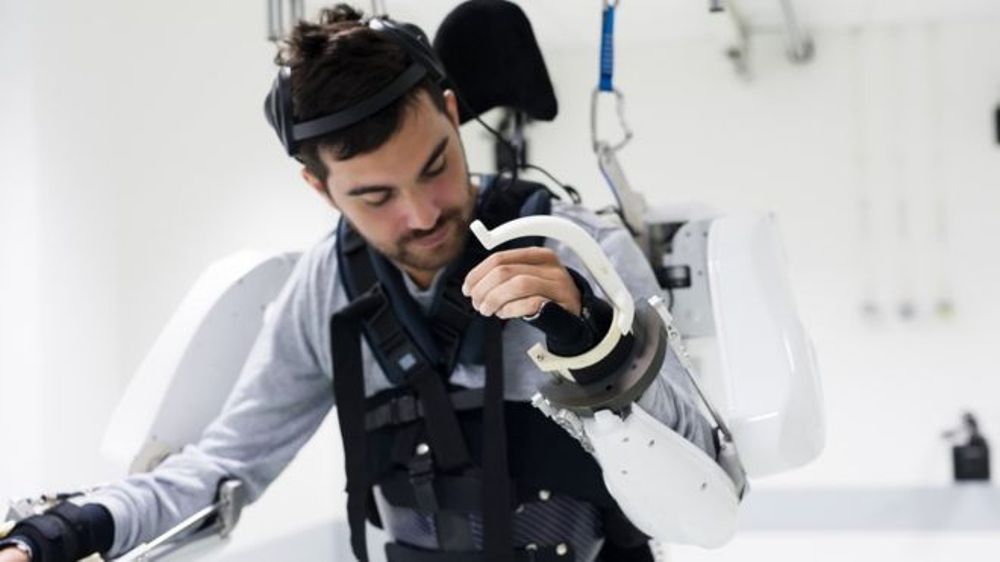An exoskeleton controlled by brain signals helps a man walk after being paralyzed for four years.
Mr. Thibault was involved in an accident at a club four years ago, falling 15m from the ground. The patient’s spinal cord was intensely damaged that left him paralyzed from shoulders down. Thibault spent two years in the hospital before taking part in an exoskeleton trial with Clinatec and the University of Grenoble in 2017.
We recall the wistful vision of global neuroscientists and their rallying call:
The core of future neuro-technologies is the interdisciplinarity, here the convergence between neurobiology and quantum-, nano- and micro-sciences is particularly emphasized as an extremely promising way towards substantial discoveries in neuroscience research and as a technological foundation for future therapeutic approaches.
A mind-controlled exoskeleton
After a paralyzing accident, this man was able to take his first step after four years using a mind-controlled exoskeleton attached to the four major limbs of his body.
According to Thibault, taking the first step was like being the first man on the Moon. It was like walking for the first time in my life, after being paralyzed for almost 4 years I have forgotten how it is to walk.
Before being inserted into the actual trial, he started practicing using brain implants to control a virtual character in a computer game.
Once again, AI technology played a big role in this experimental procedure. As we all know, AI gives computers the ability to simultaneously process huge amounts of data and emit output in lighting quick response time.
An Inspirational Use Of #AI!
AI gives computers the ability to process huge amounts of data & make decisions in lightning-quick time. This exoskeleton is able to make decisions in 350 ms and enabled a paralysed man to take his first steps in 3 years!https://t.co/1Ga5xylBKr
— BlockchainLabs.ai (@BChainLabs) October 4, 2019
How functional is it?
Though taking steps using brain signals is a huge breakthrough, using the technology outside a laboratory setup is far from happening. Thibault was attached to a ceiling harness to secure him from falling over.
This is far from autonomous walking. The signals are not yet that quick and precise to support a full phase movement. For now, we made the principle possible and doable, what’s next is to improve and extend the mobility of patients when in an exoskeleton.
-Prof Alim-Louis Benabid,President of Clinatec executive board
Only a few can afford the technology
According to experts, the technology behind the exoskeleton technology is indeed amazing but at the same time costly. The resources needed to produce these exoskeletons will surely cost a fortune. The question will be, who can afford and willing to spend on this technology?
It may create a grey area of hope for a lot of patients with the same paralysis as Thibault because a lot of them do not have the resources to obtain one.
As of now, this advanced robotic technology is still far from completion. There is still a long way for it to be in usable form outside a laboratory, but, it’s the start which is always the hardest. Stay tuned for more updates on the story of Mr. Thibault.
In case you are considering a future career in neurotechnology
Research institutions collaborate to provide an interactive forum for cutting-edge studies on the nervous system, on new materials and techniques for interfacing neurons with artificial devices, on novel molecular tools to probe the complexity of the brain at the system-, network-, cellular-, subcellular- and molecular levels.
The overall aim is to promulgate the best interdisciplinary research to the broader neuroscience community.







